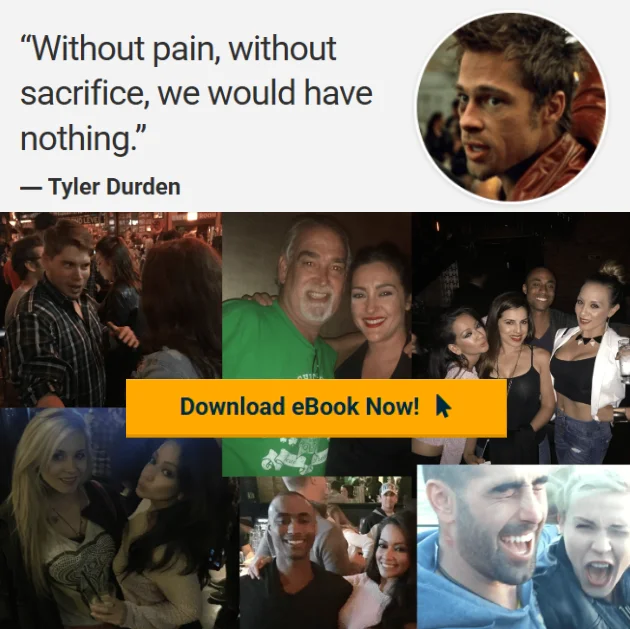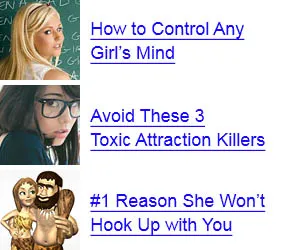Table of Contents
How to Handle Rejection Like a Boss: Mental Techniques to Stay Positive and Keep Improving
Let me take you back to my early twenties. I was standing outside a bar in downtown Chicago, my phone in hand, staring at a text that simply read, "I don't think we're a good match. Good luck out there." I'd been on three dates with this woman, thought things were going well, and was excited about where it might lead. That rejection hit like a Mike Tyson uppercut—unexpected and powerful enough to knock me off balance.
Fast forward to today, and rejection doesn't faze me nearly as much. Not because I experience it less (spoiler alert: we all face rejection throughout life), but because I've developed mental frameworks to process it constructively. Like Tony Stark constantly improving his Iron Man suit after each battle, I've upgraded my mental armor with each rejection faced.
Whether you're dealing with dating setbacks, professional disappointments, or social exclusion, learning to handle rejection effectively is a superpower that can transform your life. The good news? It's a skill anyone can develop.
1. Understanding the Psychology of Rejection
The Evolutionary Roots of Rejection Pain
Ever wonder why rejection hurts so damn much? It's not just in your head. Research shows the brain processes social rejection in the same regions that register physical pain. When our ancestors lived in small tribes, being rejected from the group could mean death. Our brains evolved to treat rejection as a serious threat to survival.
Think of it like your brain's security system—the same alarm bells that ring when you stub your toe also sound when someone swipes left on your dating profile or doesn't return your texts. Your brain is literally saying, "This is dangerous!"
How Your Default Response Is Programmed
Most of us default to one of three responses when facing rejection:
- The Walter White: Going on the offensive, getting angry or seeking revenge
- The Bruce Banner: Internalizing the rejection and blaming ourselves, triggering shame spirals
- The Kevin McCallister: Complete avoidance of similar situations to prevent future pain
None of these responses serve us well in the long run. The key to handling rejection like a boss lies in reprogramming these default settings.
The Hidden Gift in Every Rejection
What if I told you rejection is actually feedback in disguise? Just like how Peter Parker had to fail repeatedly before mastering his Spider-Man abilities, each rejection offers data that can help you improve.
When I got passed over for a promotion I thought was in the bag, I initially spiraled. But after the sting wore off, I asked for specific feedback and learned my presentation skills needed work. Six months of Toastmasters later, I not only got the next promotion but developed a skill that's benefited my entire career.

2. Building a Rejection-Proof Positive Self Image
Separating Your Actions From Your Worth
Here's a truth bomb: rejection of your actions, appearance, or ideas is not rejection of your fundamental worth as a person. This distinction is crucial for maintaining a positive self image even when facing setbacks.
When someone turns down a date with you, they're not rejecting the entirety of who you are—they're making a decision based on limited information and their own preferences. It's like when viewers initially rejected "The Shawshank Redemption" at the box office, only to later recognize it as one of the greatest films ever made. The movie didn't change—the context and perception did.
Creating an Internal Validation System
Too many of us are like Gollum with the ring when it comes to external validation—we crave it, we chase it, and we wither without it. But depending on others' approval is a recipe for emotional volatility.
I've found that creating specific self-validation rituals helps maintain emotional stability regardless of external feedback:
- Keeping a "wins journal" where I document small daily successes
- Setting process goals rather than outcome goals
- Practicing daily affirmations that reinforce my core values, not just my achievements
These practices help anchor your positive self image in something more stable than others' opinions.
Reframing Rejection as Direction
Remember in "The Matrix" when Neo keeps failing until he realizes there is no spoon? Similarly, what if you viewed rejection not as a stop sign but as a directional signal pointing you toward better alignment?
When I was repeatedly rejected from certain types of roles in my industry, I eventually recognized this as guidance toward my true strengths. Rather than continuing to bang my head against the same wall, I pivoted to adjacent opportunities that better matched my natural abilities. Those early rejections weren't telling me "you're not good enough"—they were saying "look elsewhere."



3. Practical Techniques to Handle Rejection in the Moment
The 90-Second Rule
Did you know the chemical response of emotions typically lasts just 90 seconds? What keeps us feeling bad longer is our thoughts about the experience, not the experience itself.
When facing rejection, try this technique inspired by neuroscientist Jill Bolte Taylor:
- Notice the physical sensations of rejection (tightness in chest, hot face, etc.)
- Breathe deeply and allow these sensations to flow for 90 seconds
- After 90 seconds, consciously shift your mental narrative
I used this technique when a publishing house rejected my manuscript. Instead of spiraling for days, I felt the sting intensely for about two minutes, then pivoted to planning my next submission strategy.
The John Wick Focus Shift
In the "John Wick" movies, our protagonist maintains laser focus on his objective despite numerous setbacks. Apply this same focus shifting after rejection:
- Acknowledge the rejection without minimizing it
- Ask yourself: "What's still in my control?"
- Take one immediate action toward your goal
After a dating rejection, instead of ruminating, I might immediately message another potential match or sign up for an activity I enjoy where I might meet new people. This maintains momentum and prevents rejection from derailing your dating success.
The Rejection Resilience Workout
Just as you wouldn't expect to bench press 300 pounds without training, you shouldn't expect to handle major rejections without practicing with smaller ones.
Try these "rejection resilience workouts":
- Ask for a discount at a local coffee shop
- Compliment a stranger (respectfully)
- Share an unpopular opinion in a low-stakes setting
Each small rejection you weather builds your resilience muscle. Start small and work your way up, just like any training program.



4. Transforming Rejection into Growth Opportunities
The Batman Post-Mortem Analysis
Batman doesn't just take an ass-kicking and move on—he analyzes what happened and improves his approach. After significant rejections, conduct your own post-mortem:
- Wait until the emotional charge has diminished
- Ask: "What objective factors contributed to this outcome?"
- Identify 1-3 actionable lessons or improvements
- Implement these changes in your next attempt
When I faced repeated rejection in dating, my post-mortem revealed I was selecting partners based primarily on physical attraction while neglecting compatibility in values and life goals. Adjusting my criteria dramatically improved my dating success rate.
Leveraging Rejection for Skill Development
Every rejection points to a potential growth area. The key is identifying the right lesson.
If you keep getting rejected after first dates, perhaps your conversation skills need work. If your job applications consistently stall at the interview stage, your interview technique might need refining.
I once faced a streak of rejections in professional speaking opportunities. Rather than quit, I joined a specialized coaching program focused specifically on storytelling techniques. Six months later, my acceptance rate tripled.
Finding Your Rejection Heroes
Did you know that Stephen King's first novel "Carrie" was rejected 30 times before being published? Or that Michael Jordan was cut from his high school basketball team?
Create a personal list of "rejection heroes"—people who faced significant setbacks in your field before achieving success. When handling rejection gets tough, their stories can provide both perspective and practical blueprints for perseverance.
5. Special Tactics for Dating Rejection
Decoding Dating Feedback Without Going Crazy
Dating rejection can feel particularly personal, but it's often the least personal form of rejection. Why? Because dating success depends heavily on subjective chemistry and timing.
When someone says "There wasn't a spark," they're not saying you're unattractive or unworthy—they're saying the specific chemical reaction between you two didn't happen. That's about as personal as being allergic to shellfish—it's just how individual systems interact.
Maintaining Momentum Through Rejection Streaks
Dating apps have amplified both the frequency and impersonality of rejection. To maintain a positive self image through this process:
- Set process goals ("I'll have quality conversations with five new people this week") rather than outcome goals ("I'll find my soulmate this month")
- Take strategic breaks when feeling rejection fatigue
- Vary your approaches and platforms
When I hit a dry spell on dating apps, I switched to activity-based meetups where connections could develop organically through shared interests. This diversity of approaches maintained my confidence while expanding my social circle.
The Exposure Theory of Rejection Immunity
Psychology tells us that gradual exposure to a fear within a safe context can reduce its power. The same applies to rejection.
Starting conversations with new people regularly—whether romantically interested or not—normalizes the possibility of rejection. With enough exposure, rejection becomes merely an expected and acceptable outcome rather than a devastating blow.
I made it a habit to strike up conversations with strangers in appropriate settings (coffee shops, networking events) with zero expectations. This low-pressure practice made romantic rejections feel less significant over time.



6. Professional Rejection: Bouncing Back Stronger
The Dwayne “The Rock” Johnson Pivot
Before becoming one of Hollywood's highest-paid actors, The Rock was cut from the Canadian Football League, ending his football dreams. His pivot to wrestling and eventually acting demonstrates the power of strategic redirection after rejection.
When faced with career rejection, ask:
- What transferable skills do I possess?
- Which adjacent opportunities might value my specific combination of strengths?
- What's the shortest path to demonstrating value in this new direction?
After being rejected for several traditional marketing roles, I leveraged my communication skills and industry knowledge to create specialized content marketing services for my industry. This pivot led to more fulfilling work and higher compensation than the roles I'd initially sought.
Handling Public Professional Rejection
Few things sting like being passed over for a promotion or having your idea shot down in a meeting. To handle these public professional rejections:
- Maintain composure in the moment (remember the 90-Second Rule)
- Seek private feedback as soon as appropriate
- Visibly implement constructive criticism
When my presentation was criticized by senior leadership, I thanked them for the feedback, scheduled time with the most critical executive to understand their perspective, and incorporated their suggestions into my next presentation. This not only improved my skills but demonstrated emotional intelligence that ultimately advanced my career.
Building a Rejection Response Template
Professional rejections often require a response. Having a template ready prevents emotional reactions:
"Thank you for considering me and for taking the time to share your decision. I value the experience and would appreciate any specific feedback that could help me improve for future opportunities. I remain interested in [company/opportunity] and hope our paths cross again."
This response maintains professionalism while keeping doors open for future possibilities.
7. The Science of Resilience: Training Your Brain for Rejection Resistance
Neuroplasticity and Rejection Response
Our brains are remarkably adaptable. Through consistent practice, we can literally rewire our neural pathways to respond differently to rejection.
The science of neuroplasticity suggests that repeatedly pairing rejection experiences with constructive responses rather than negative spirals can create new default patterns in our brains—much like how Tony Stark continuously recoded his J.A.R.V.I.S. system to better respond to threats.
The Physiological Reset Button
Rejection triggers a stress response—increased cortisol, elevated heart rate, and shallow breathing. Physical interventions can reset your system:
- Box breathing (4 counts in, 4 counts hold, 4 counts out, 4 counts hold)
- Cold exposure (splash cold water on your face or take a cold shower)
- Vigorous physical activity for at least 2 minutes
I keep a jump rope at my office specifically for rejection reset sessions. Five minutes of jumping rope changes my physiological state completely and helps me return to rational thinking.
The Mental Diet Challenge
Just as junk food affects your physical health, consuming stories of catastrophic rejection affects your mental resilience. Try this 7-day mental diet:
- No doom-scrolling rejection stories online
- Actively seek and record stories of resilience and comebacks
- Surround yourself with people who have healthy relationships with failure and rejection
After a particularly rough patch of rejections, I implemented this diet along with temporarily muting friends who constantly shared rejection horror stories. The difference in my outlook was remarkable within just one week.



8. Long-Term Strategies: Building a Rejection-Proof Life
Diversifying Your Identity Investments
If your entire self-worth is tied to one area of life—whether dating, career, or a specific skill—rejection in that area will hit exponentially harder.
Like a smart financial investor diversifies their portfolio, diversify your identity investments across multiple domains:
- Professional achievements
- Personal relationships
- Creative pursuits
- Physical accomplishments
- Community contributions
- Knowledge acquisition
When I experienced a major professional setback, having just completed my first marathon gave me an alternate source of pride and accomplishment to lean on while rebuilding professionally.
Creating a Personal Board of Directors
Assemble 3-5 people who:
- Know your strengths and weaknesses
- Have your best interest at heart
- Will give honest feedback without sugar-coating
- Have achieved success in areas you value
These individuals become your personal reality check when rejection distorts your self-perception. My board includes a former boss, a longtime friend, and a mentor in my industry. Their perspectives have been invaluable when rejection threatened my positive self image.
Scheduling Regular Rejection Reviews
Rather than assessing each rejection individually, try scheduling monthly "rejection reviews":
- Document all rejections experienced
- Identify patterns or common themes
- Create specific action plans for areas needing improvement
- Celebrate rejections that led to growth or redirection
This systematic approach transforms rejection from an emotional emergency into valuable business intelligence for your life.



9. Advanced Techniques: Leveraging Rejection for Competitive Advantage
The Rocky Balboa Principle
In "Rocky IV," our underdog hero turns the brutal punishment he takes from Ivan Drago into a learning experience that ultimately leads to victory. Similarly, you can use rejection analysis to gain competitive insights others miss.
When my content was consistently rejected by certain publications, I deeply analyzed the pieces they did accept. This revealed subtle editorial preferences not stated in their submission guidelines. My next submission incorporated these insights and was immediately accepted.
The Rejection-to-Referral Pipeline
Not all rejections are dead ends. With the right approach, approximately 20% of rejections can be converted into alternative opportunities or valuable referrals.
After receiving a rejection, try this: "Thank you for considering me. Since you have a good understanding of what you're looking for, would you happen to know someone or somewhere that might be a better fit for my [skills/profile/offering]?"
I've received some of my best opportunities through this exact approach after initial rejections.
The Competitive Rejection Analysis
In competitive fields, rejection data across a peer group can reveal valuable patterns. By comparing notes with trusted colleagues who've faced similar rejections, you can identify:
- Industry trends affecting hiring/selection decisions
- Emerging skills gaps worth developing
- Alternative pathways others have successfully navigated
This collaborative approach turns individual rejection data points into actionable market intelligence.
10. Putting It All Together: Your 30-Day Rejection Resilience Plan
Week 1: Establishing Your Baseline
- Day 1-2: Document your current rejection responses and triggers
- Day 3-5: Implement the 90-Second Rule for all negative emotions
- Day 6-7: Create your rejection heroes list and post it where you'll see it daily
Week 2: Building Your Toolkit
- Day 8-10: Practice the physiological reset techniques daily
- Day 11-12: Create your rejection response templates for different scenarios
- Day 13-14: Assemble your personal board of directors
Week 3: Active Resilience Training
- Day 15-17: Complete one intentional rejection exposure exercise daily
- Day 18-19: Implement post-mortem analysis on a past significant rejection
- Day 20-21: Practice reframing three past rejections as directional signals
Week 4: Integration and Advancement
- Day 22-24: Test your resilience with progressively challenging rejection scenarios
- Day 25-27: Develop your personalized rejection-to-referral script and test it
- Day 28-30: Create your long-term rejection resilience maintenance plan
Following this structured approach has helped me transform my relationship with rejection from a source of dread to a valuable growth tool. The dating success I now enjoy didn't come from avoiding rejection but from learning to handle rejection productively and persistently moving forward.
The Bottom Line
Learning to handle rejection effectively isn't just about feeling better—it's about strategic advantage. In a world where most people are paralyzed by rejection fear, your ability to process rejection constructively and keep advancing puts you ahead of 95% of your competition, whether in dating, career, or personal development.
Remember that rejection isn't personal, even when it feels that way. It's simply feedback about fit and timing, not worth. By developing a robust positive self image independent of others' approval, you create an emotional foundation that can weather rejection storms.
The next time rejection hits—and it will—remember that like Tyler Durden says in "Fight Club": "It's only after we've lost everything that we're free to do anything." Rejection strips away your attachments to specific outcomes and opens up possibilities you may never have considered.
Every time you handle rejection effectively, you're not just recovering—you're upgrading your resilience operating system. Like Steve Rogers transforming into Captain America, each rejection you process constructively makes you stronger for the next challenge.
I've gone from being devastated by a simple text rejection to confidently navigating complex professional and personal setbacks. The difference wasn't a change in the frequency of rejection—it was a transformation in how I processed and leveraged those experiences.
Whether you're facing dating rejection, professional setbacks, or social exclusion, these techniques will help you maintain a positive self image, extract valuable lessons, and keep moving forward toward your goals. Remember: rejection isn't the end of the story—it's just a plot twist in your hero's journey.
Don't just survive rejection—learn to leverage it. When you can handle rejection like a boss, you unlock levels of opportunity and growth that most people never experience simply because they're too afraid to risk hearing "no."
Now go out there and get rejected! Your future success depends on it.
















